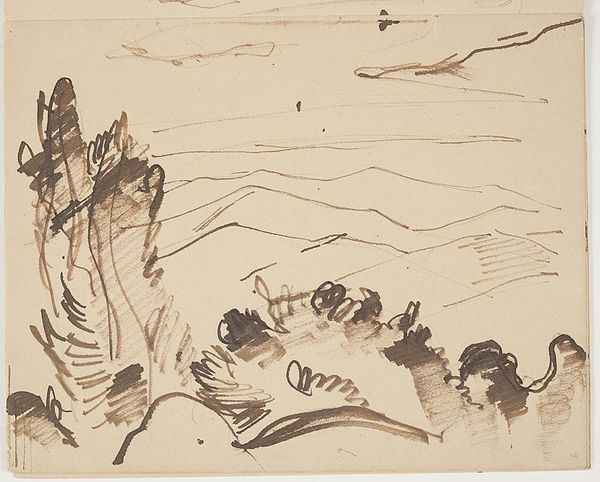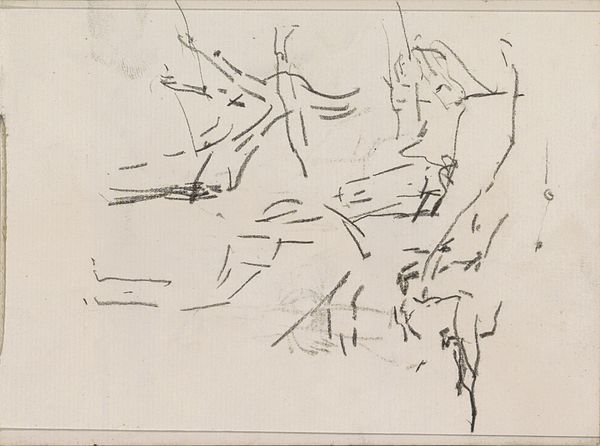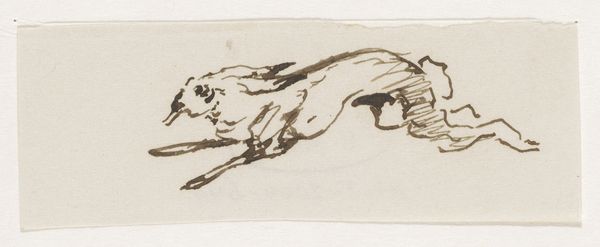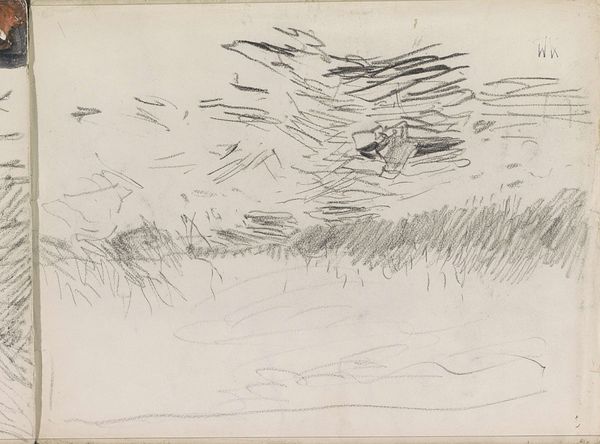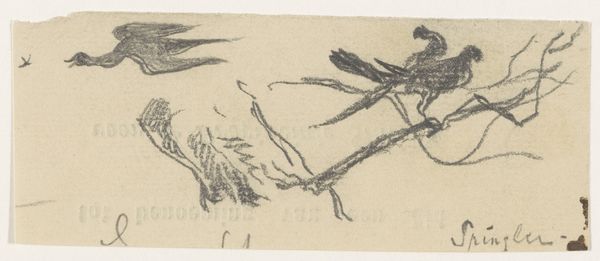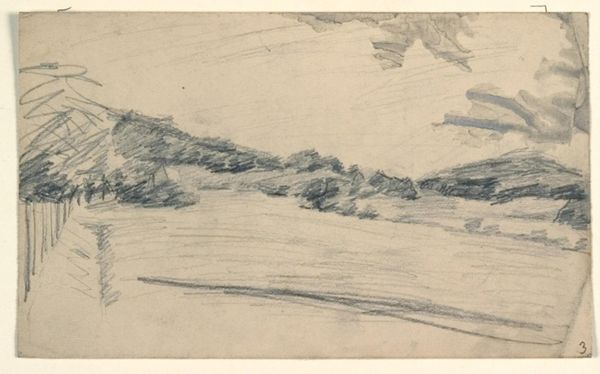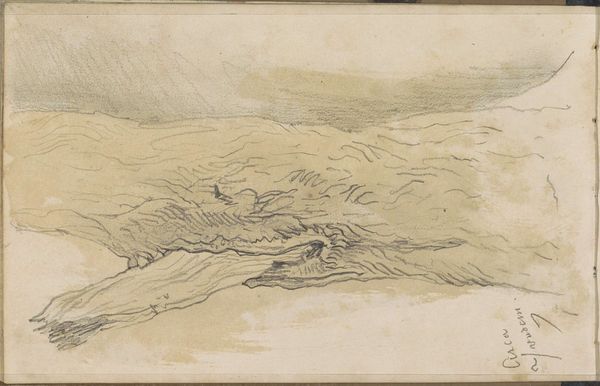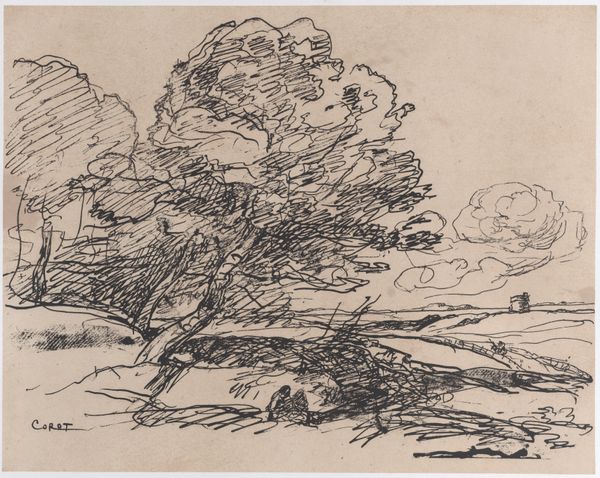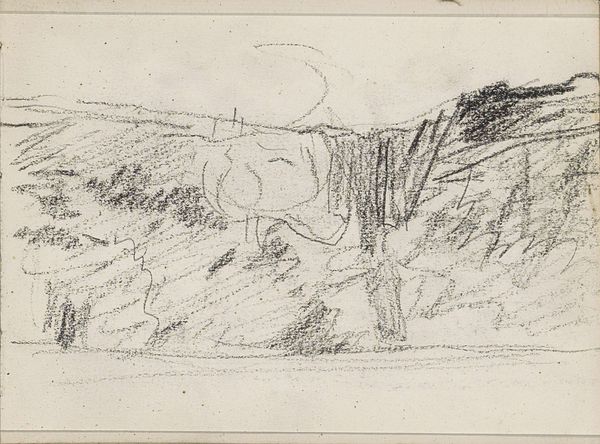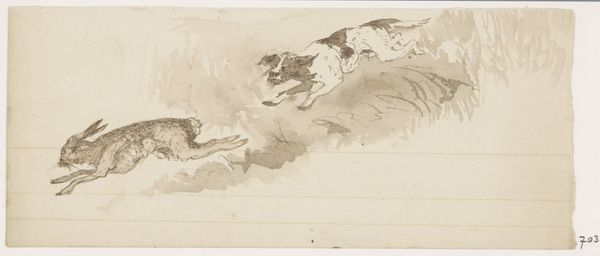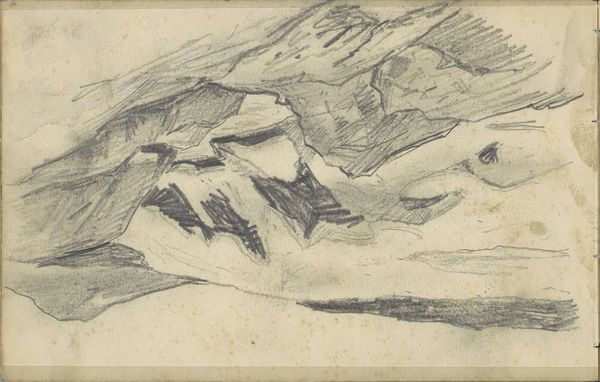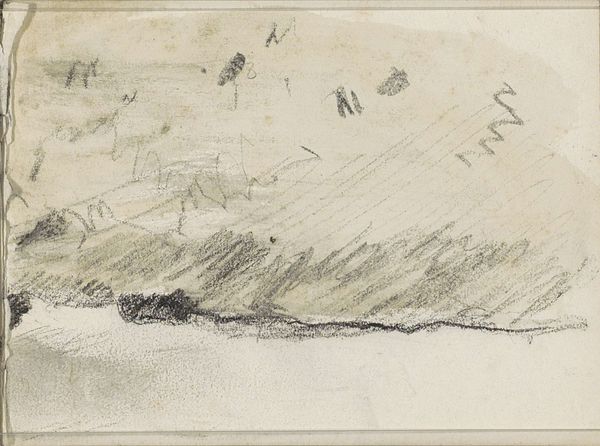
drawing, ink, pen
#
drawing
#
animal
#
pen sketch
#
pencil sketch
#
dog
#
landscape
#
figuration
#
ink
#
pen-ink sketch
#
pen
Dimensions: height 50 mm, width 178 mm
Copyright: Rijks Museum: Open Domain
Curator: This dynamic sketch, rendered in pen and ink, is titled "Dog Pursuing Hare." Johannes Tavenraat likely created it sometime between 1840 and 1880. It resides here at the Rijksmuseum. Editor: The immediacy of the chase is palpable! There's such energy in the frantic scribbles that depict the hare and the focused determination in the hound's lean form. It's as if we’ve stumbled upon a private, urgent moment in the field. Curator: Exactly. The piece speaks to Tavenraat's skills with readily available materials, his proficiency in capturing movement with limited strokes of pen on paper. This wasn't intended for high-art consumption, rather as a study of form and action—perhaps an exploration of hunting practices. Editor: But isn’t the power dynamic embedded in this work unavoidable? It reminds me of wider themes around vulnerability, of the relationship between predator and prey and the often merciless societal structures mirroring that dynamic. There's something deeply unsettling, too, in how little context we have beyond this pursuit. Curator: That's a very interesting reading. Thinking materially, this quickness points to a particular stage in art production where efficiency matters and material resources were deployed thoughtfully for either further study or merely documenting animal forms, or possibly hunting techniques and the skill that's required to train hunting dogs. The paper and the ink themselves have to be factored in as readily available products of their time. Editor: Agreed. Yet it transcends mere animal documentation. Consider the history of hunting itself – how it has often been deployed to assert dominance, not just over animals but over other humans too. Who has the right to hunt? Who is being hunted? This chase evokes those larger societal questions of class and power. Curator: You bring such a powerful socio-political view into the art encounter! I suppose if you approach it from that lens, there are further interpretations around control that materialize themselves through materials used in art and design during Tavenraat's time. Editor: And maybe those very tools—the ink, the paper, the artist’s hand—contribute to perpetuating those power structures, even if unconsciously. Art never exists in a vacuum; it echoes the societal structures from which it arises. Curator: I have gained a richer perception after considering what you point out. Viewing this with you prompts me to see both process and impact, production and consumption, more critically and within historical perspectives. Editor: It’s precisely that intersection, where materiality meets meaning, that allows us to continually unpack how art shapes—and is shaped by—the world around us.
Comments
No comments
Be the first to comment and join the conversation on the ultimate creative platform.
